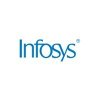
Genpact
Proud winner of ABECA 2025 - AmbitionBox Employee Choice Awards
Filter interviews by
Genpact Financial Accountant Interview Questions and Answers
23 Interview questions
Bank reconciliation is the process of comparing a company's financial records with bank statements to ensure accuracy.
Identifying Discrepancies: Bank reconciliation helps identify differences between the company's cash records and the bank's records, such as outstanding checks or deposits in transit.
Timing Differences: For example, a check issued by the company may not have cleared the bank yet, leading to a tempo...
The Golden Rules of Accounting guide the recording of financial transactions, ensuring accuracy and consistency in financial statements.
Debit the receiver, credit the giver: This rule applies to personal accounts. For example, if a company pays cash to a supplier, the cash account is credited, and the supplier's account is debited.
Debit what comes in, credit what goes out: This rule is relevant for real accounts. ...
Double-entry bookkeeping is an accounting method where every transaction affects at least two accounts, ensuring accuracy and balance.
Two Accounts: Each transaction involves a debit in one account and a credit in another, maintaining the accounting equation (Assets = Liabilities + Equity).
Example: If a business purchases inventory for $1,000, it debits the Inventory account and credits the Cash account by the same...
A balance sheet is a financial statement that summarizes a company's assets, liabilities, and equity at a specific point in time.
Assets: Resources owned by the company, such as cash, inventory, and property. For example, a company may have $100,000 in cash and $50,000 in inventory.
Liabilities: Obligations or debts owed to outside parties, like loans and accounts payable. For instance, a company might have $30,000 ...
What people are saying about Genpact





Accounts payable refers to the money a company owes to its suppliers for goods and services received but not yet paid for.
Liability Account: Accounts payable is classified as a current liability on the balance sheet, representing short-term obligations.
Supplier Invoices: When a company receives goods or services, it typically receives an invoice, which is recorded in accounts payable until payment is made.
Payment ...
Goodwill is an intangible asset that represents the excess of the purchase price of a company over the fair value of its identifiable assets and liabilities.
Goodwill is recorded on the balance sheet when one company acquires another company for a price higher than the fair market value of its net assets.
It represents the reputation, brand value, customer relationships, and other intangible assets of the acquired c...
Double entry system is a method of bookkeeping that records each financial transaction in two separate accounts to maintain balance.
Each transaction is recorded in at least two accounts - one account is debited and the other is credited.
Debits must equal credits to ensure the accounting equation (Assets = Liabilities + Equity) remains balanced.
It helps in detecting errors and fraud as any discrepancy in the accoun...
Cash flow statement is a financial report that shows the inflow and outflow of cash in a business over a specific period of time.
It provides information on how well a company manages its cash position.
It consists of three sections: operating activities, investing activities, and financing activities.
Operating activities include cash received from sales, payments to suppliers, and salaries paid to employees.
Investi...
Some weaknesses include lack of experience in a specific accounting software, difficulty with public speaking, and tendency to procrastinate.
Lack of experience in a specific accounting software
Difficulty with public speaking
Tendency to procrastinate
Capital refers to financial assets or resources used for investment and growth in a business or economy.
Capital can be classified into different types: equity capital (e.g., stocks) and debt capital (e.g., loans).
Working capital is essential for day-to-day operations, calculated as current assets minus current liabilities.
Investment in capital assets, like machinery or real estate, can enhance production capacity ...
Genpact Financial Accountant Interview Experiences
7 interviews found
I applied via Job Fair and was interviewed in Mar 2024. There were 4 interview rounds.
Eligible and company details
(11 Questions)
- Q1. What are you strength and weakness
- Ans.
I excel in attention to detail and time management, but I sometimes struggle with delegating tasks.
Strength: Strong attention to detail - I meticulously review financial statements to ensure accuracy.
Strength: Excellent time management - I consistently meet deadlines, even during peak periods like month-end close.
Weakness: Difficulty in delegating - I tend to take on too much myself, which can lead to burnout.
Weakness:...
- Q2. Tell me about yourself
- Q3. Why do you want work for us?
- Ans.
Because of the opportunity for growth andadvancement
- Q4. What is your greatest achievement
- Ans.
Giving a great presentation at work
- Q5. Why should hire you
- Q6. Your leadership skills
- Q7. Talk about company
- Q8. Why do you want this job
- Q9. Value this culture
- Ans.
Valuing the culture of a company is crucial for understanding its values, beliefs, and practices.
Understanding the company's mission, vision, and values
Recognizing the importance of diversity and inclusion
Respecting the traditions and customs of the organization
Promoting a positive work environment through cultural appreciation
- Q10. What are the weakness
- Q11. Family background
(2 Questions)
- Q1. What are you salary expectations
- Q2. Why do you want this job
(1 Question)
- Q1. What is technical
Interview Preparation Tips
I applied via Recruitment Consulltant and was interviewed in Oct 2023. There were 4 interview rounds.
Eligleble details and company datails
(5 Questions)
- Q1. Tell me about your self
- Q2. What are your strength
- Q3. What is your hobbies
- Q4. Why should we you hire
- Q5. Why did you join this company
(1 Question)
- Q1. Why did join this company
(5 Questions)
- Q1. About this Genpact
- Q2. Why do you want work for our company
- Q3. Why are you intrested this job
- Q4. What are you strengths
- Q5. Tell me about your self
Interview Preparation Tips
I applied via Naukri.com and was interviewed in Apr 2024. There were 2 interview rounds.
Financial accounting
(3 Questions)
- Q1. Explain about cash flow statement
- Ans.
Cash flow statement is a financial report that shows the inflow and outflow of cash in a business over a specific period of time.
It provides information on how well a company manages its cash position.
It consists of three sections: operating activities, investing activities, and financing activities.
Operating activities include cash received from sales, payments to suppliers, and salaries paid to employees.
Investing ac...
- Q2. What is goodwill
- Q3. What is double entry system
Interview Preparation Tips
- Tally ERP
I applied via Job Fair and was interviewed in Sep 2023. There were 3 interview rounds.
(1 Question)
- Q1. How can you progress your company?
- Ans. By doing good work and understanding everyone's needs.
(1 Question)
- Q1. What is important work in company?
(1 Question)
- Q1. How to manage your work and company?
Interview Preparation Tips
- Partner ship work
- Trade Finance
I applied via Company Website and was interviewed in Apr 2023. There were 2 interview rounds.

(4 Questions)
- Q1. My self debit credit
- Q2. What is the financial markets
- Ans.
Financial markets are platforms where buyers and sellers trade financial assets such as stocks, bonds, currencies, and commodities.
Financial markets facilitate the exchange of financial assets between buyers and sellers.
They provide a platform for companies to raise capital by issuing stocks and bonds.
Financial markets include stock markets, bond markets, currency markets, and commodity markets.
Examples of financial ma...
- Q3. Accounting liability
- Q4. Financial management
Interview Preparation Tips
I appeared for an interview before May 2024, where I was asked the following questions.
- Q1. Tell me about the Golden rules.
- Ans.
The Golden Rules of Accounting guide the recording of financial transactions, ensuring accuracy and consistency in financial statements.
Debit the receiver, credit the giver: This rule applies to personal accounts. For example, if a company pays cash to a supplier, the cash account is credited, and the supplier's account is debited.
Debit what comes in, credit what goes out: This rule is relevant for real accounts. For i...
- Q2. What is Bank reconciliation.
- Ans.
Bank reconciliation is the process of comparing a company's financial records with bank statements to ensure accuracy.
Identifying Discrepancies: Bank reconciliation helps identify differences between the company's cash records and the bank's records, such as outstanding checks or deposits in transit.
Timing Differences: For example, a check issued by the company may not have cleared the bank yet, leading to a temporary ...
- Q3. What is Accounts payable.
- Q4. What is balance sheet.
- Q5. What is double-entry book keeping
Interview Questionnaire
14 Questions
- Q1. What you mean by contry
- Q2. Different between account payable and account receivable
- Ans.
Accounts payable is money owed by a company to its suppliers, while accounts receivable is money owed to a company by its customers.
Accounts payable represents the company's short-term liabilities, while accounts receivable represents its short-term assets.
Accounts payable is recorded as a liability on the balance sheet, while accounts receivable is recorded as an asset.
Accounts payable is typically paid by the company...
- Q3. Nominal account examples
- Ans.
Nominal accounts are used to record revenue, expenses, and gains or losses.
Nominal accounts are temporary accounts that are closed at the end of an accounting period.
Examples of nominal accounts include sales revenue, salaries expense, rent expense, interest income, and advertising expense.
These accounts are used to track the flow of money in and out of a business and determine its profitability.
Nominal accounts are al...
- Q4. Types of accounts
- Ans.
Types of accounts include assets, liabilities, equity, revenue, and expenses.
Assets: resources owned by the company (e.g. cash, inventory)
Liabilities: debts owed by the company (e.g. loans, accounts payable)
Equity: the residual interest in the assets of the company after liabilities are deducted (e.g. common stock, retained earnings)
Revenue: income earned by the company (e.g. sales revenue, service revenue)
Expenses: co...
- Q5. What you mean by assets
- Ans.
Assets are resources owned by a company that have monetary value and can be used to generate revenue.
Assets can include cash, investments, property, equipment, and inventory.
They are recorded on a company's balance sheet and can be classified as current or non-current.
Current assets are those that can be converted to cash within a year, while non-current assets are those that have a longer lifespan.
Examples of assets i...
- Q6. Different between accounts and accounting
- Ans.
Accounts refer to the records of financial transactions, while accounting is the process of recording, summarizing, and analyzing those transactions.
Accounts are the individual records of financial transactions, such as sales, purchases, and expenses.
Accounting involves the systematic recording, summarizing, and analyzing of these transactions to provide financial information.
Accounts are used to track the financial ac...
- Q7. Types of staments
- Ans.
There are three types of financial statements: income statement, balance sheet, and cash flow statement.
Income statement shows a company's revenues and expenses over a period of time.
Balance sheet shows a company's assets, liabilities, and equity at a specific point in time.
Cash flow statement shows a company's inflows and outflows of cash over a period of time.
Other types of statements include statement of changes in ...
- Q8. Give one example on nominal accont
- Ans.
A nominal account is a general ledger account that is used to record expenses, revenues, gains, and losses.
Nominal accounts are temporary accounts that are closed at the end of an accounting period.
Examples of nominal accounts include sales revenue, rent expense, interest income, and advertising expense.
These accounts are used to track the financial performance of a business over a specific period of time.
Nominal accou...
- Q9. What about your college
- Q10. What you mean by cash
- Ans.
Cash refers to physical currency or coins that can be used to make purchases or pay debts.
Cash is a tangible asset that can be easily exchanged for goods or services.
It is commonly used for small transactions or in situations where electronic payment methods are not available.
Cash can be stored in a wallet, cash register, or bank vault.
Examples of cash include coins, banknotes, and checks that can be immediately cashed...
- Q11. Types of assets
- Ans.
Assets are resources owned by a company or individual that have monetary value and can be used to generate income.
Types of assets include tangible assets such as property, plant, and equipment, and intangible assets such as patents, trademarks, and goodwill.
Financial assets such as stocks, bonds, and cash equivalents are also considered assets.
Current assets are those that can be easily converted to cash within a year,...
- Q12. What you mean by depreciation
- Ans.
Depreciation is the decrease in value of an asset over time due to wear and tear, obsolescence, or other factors.
Depreciation is a method used in accounting to allocate the cost of an asset over its useful life.
It is recorded as an expense on the income statement and reduces the asset's value on the balance sheet.
Depreciation can be calculated using various methods such as straight-line, declining balance, or units of ...
- Q13. What you by capital
- Ans.
Capital refers to financial assets or resources used for investment and growth in a business or economy.
Capital can be classified into different types: equity capital (e.g., stocks) and debt capital (e.g., loans).
Working capital is essential for day-to-day operations, calculated as current assets minus current liabilities.
Investment in capital assets, like machinery or real estate, can enhance production capacity and e...
- Q14. Different between
- Ans.
Difference between what?
Please specify what you are comparing
Provide context for the comparison
Identify key similarities and differences
Use examples to illustrate the comparison
Skills evaluated in this interview
Interview questions from similar companies

I applied via Job Portal and was interviewed in Oct 2020. There were 3 interview rounds.
Interview Questionnaire
1 Question
- Q1. Basic questions regarding Informatica, Data Warehousing concepts and Unix
Interview Preparation Tips

I applied via Naukri.com and was interviewed before Apr 2021. There was 1 interview round.
(3 Questions)
- Q1. Tell abouts u r self
- Q2. Previously work experience
- Ans.
I have diverse experience in project management, customer service, and data analysis across various industries.
Managed a team of 5 in a project that improved operational efficiency by 20%.
Provided customer support for a tech company, resolving issues and enhancing user satisfaction.
Conducted data analysis for marketing campaigns, leading to a 15% increase in conversion rates.
- Q3. About project on college
Interview Preparation Tips
- Financial Accounting
- Python
- C++
- Java

I applied via Recruitment Consultant and was interviewed before Sep 2020. There were 3 interview rounds.
Interview Questionnaire
3 Questions
- Q1. 1. Why do you want to change?
- Q2. 2. What is your goal?
- Q3. 3. Critical project you have handled?
Interview Preparation Tips
Genpact Interview FAQs
The duration of Genpact Financial Accountant interview process can vary, but typically it takes about less than 2 weeks to complete.
Tell us how to improve this page.
Genpact Interviews By Designations
- Genpact Process Associate Interview Questions
- Genpact Process Developer Interview Questions
- Genpact Management Trainee Interview Questions
- Genpact Assistant Manager Interview Questions
- Genpact Business Analyst Interview Questions
- Genpact Senior Associate Interview Questions
- Genpact Consultant Interview Questions
- Genpact Accountant Interview Questions
- Show more
Interview Questions for Popular Designations
Overall Interview Experience Rating
based on 10 interview experiences
Difficulty level
Duration
Interview Questions from Similar Companies
Genpact Financial Accountant Reviews and Ratings
based on 17 reviews
Rating in categories
|
Process Developer
38.4k
salaries
| ₹2.4 L/yr - ₹7.2 L/yr |
|
Process Associate
29.2k
salaries
| ₹1.8 L/yr - ₹4.9 L/yr |
|
Management Trainee
22.7k
salaries
| ₹4.2 L/yr - ₹9 L/yr |
|
Assistant Manager
21.6k
salaries
| ₹6 L/yr - ₹13.3 L/yr |
|
Manager
8.6k
salaries
| ₹11.2 L/yr - ₹19.5 L/yr |

Accenture

Capgemini

TCS

Cognizant
- Home >
- Interviews >
- Genpact Interview Questions













